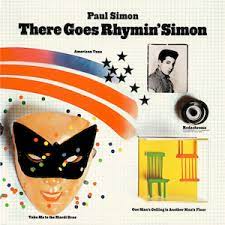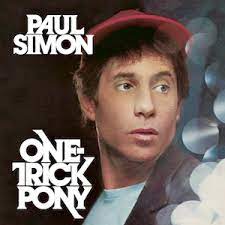Pricing: $3.25ea OR any 10 for $10
(use code "Any10410" at checkout)
Paid Requests for $25ea
(comes with any 8 freebies -> so 9 for $25)
100's Of Free Demos & Chord Sheets
Best Of Paul Simon Songs
On The Acoustic

Welcome to my best of Paul Simon songs page where you'll find free Paul Simon guitar chords and lyrics in a free pdf download, as well as some free acoustic guitar demos on several classic songs.
I've also added some of the Paul Simon album covers to this page so you know where the songs originated. And if you need full tutorials, they are available below for a small fee.
Jump links to quickly access the sections.
Best Of Paul Simon Songs
PDF's, Demos, Chords & Lessons
1. 50 Ways To Leave Your Lover

50 Ways To Leave Your Lover was released in late 1975 as the second single from the album "Still Crazy After All These Years".
It became a big hit in the United States, reaching number one on several music charts, and also reached number two in France.
The distinctive drum part in the song was played by drummer Steve Gadd. Interestingly, the melody of the song comes from a much older Danish song dating back to 1917.
To play this song, you'll need to tune your guitar in standard tuning. The strumming pattern for most of the song is down, down, up, down, down, up, and then repeat. For the chorus, you'll use a different pattern called a shuffle. You won't need to do any picking, but you'll need to know a few chords: Em, D, Cmaj7, B7, Adim, Cmaj7, Am, G, A+, and C.
Jump To Top
2. Diamonds On The Souls Of Her Shoes

Diamonds On The Souls Of Her Shoes is a song by the American singer-songwriter Paul Simon. It was released as the fourth single from his seventh album, called "Graceland," in 1986 by Warner Bros. Records. The song also includes singing from the South African group Ladysmith Black Mambazo. It became quite popular in Canada, reaching number two on the charts.
Paul Simon wrote "Diamonds on the Soles of Her Shoes" after a trip to South Africa. While he was there, he collected different kinds of music from local people. When he returned to New York, he finished making the album with the musicians he had brought back from South Africa. This story is told by Simon himself in a documentary called "Classic Albums" about the making of the album "Graceland."
To play the song on the guitar, you'll need to put a capo on the third fret. This changes the key to Db, Gb, and Ab chords at the start, then shifts up one fret to D, G, and A chords. The rhythm involves a steady shuffle pattern with some subtle snare drum beats.
Jump To Top
3. Duncan

Duncan came out as a single in 1972 from Paul Simon's album named "Paul Simon." It was his third single after "Me And Julio Down By The Schoolyard" and "Mother And Child Reunion."
The song didn't do as well as the other two, reaching number 52 on the Billboard Hot 100 chart.
You can play "Duncan" using standard tuning on the guitar, but there's some lead guitar work involved. The rhythm pattern I use is root down up down up down up, and the chords you'll need are C, G, D, Em, and A7.
4. Father And Daughter

Father And Daughter was penned by Paul Simon for the 2002 movie "The Wild Thornberrys." It became a single in 2003 and was re-released in 2006 on his album "Surprise."
The song made it to number 20 on the Adult Contemporary chart.
To play this tune, you'll need to put a capo on the fourth fret of your guitar and do some picking. The rhythm follows a root down up down up down up pattern. The chords you'll use are F, C/E, Dm, G, C, Csus, Am, Em, C, and G/G#.
Jump To Top
5. Graceland

Graceland was released in 1986 from the album with the same name. The album also featured the Everly Brothers.
The song reached number 38 on various music charts. It played a big role in helping the album win the Grammy Award for Album of the Year in 1988.
You can play "Graceland" using standard tuning on the guitar, and you won't need to play any lead parts. The rhythm pattern I use is a quick root down up down up and repeat. To play it, use the chords A, Dbm, B, E, and D.
Jump To Top Of Best Of Paul Simon Songs
6. Kodachrome

Kodachrome was released by Paul Simon in 1973 as part of his third album called "There Goes Rhymin Simon." This song, along with another from the same album, reached number two on the charts.
Originally titled "Goin Home," Paul Simon sometimes changes a line in the song: "everything looks better (or worse) in black and white." He's not certain which way he originally wrote it.
For the rhythm of this song, you can play a pattern that goes root up down up root up down up, with some riffs mixed in, but there's no need for lead guitar parts. The chords you'll need are E, A, Gbm, B7, E7, Db7, Gb, Bm, and D.
Jump To Top
7. Late In The Evening

Late In The Evening comes from Paul Simon's album "One Trick Pony" in 1980, where it served as the lead single. The song made it to number six on the charts in the United States and was a top 20 hit in several other countries.
Drummer Steve Gadd used two drumsticks in each hand for this track.
To play this song, you'll need to tune your guitar to Drop D Tuning. If you want to play it in the original key, you can use a capo on the third fret. There's some picking involved with the three chords D, G, and A. The rhythm patterns are explained in detail in the full lesson tutorial.
Jump To Top Of Best Of Paul Simon Songs
8. Loves Me like A Rock

Loves Me Like A Rock came out as a single in 1973, reaching number two on the charts, just like "Kodachrome."
Written by Paul Simon, it was the second single from his third album called "There Goes Rhymin' Simon," released by Columbia Records. In the song, you'll hear background vocals from the Dixie Hummingbirds, a Southern black gospel group. Although the lyrics aren't typical of gospel music, the Dixie Hummingbirds were excited to record it with Simon.
The song was a big hit, reaching number two on the Billboard Hot 100 and becoming a top five hit in Canada. It sold over a million copies, earning a gold certification from the Recording Industry Association of America.
To play this song, you can use standard tuning on your guitar and follow a down up down up down up down up rhythm pattern. The chords you'll need are G, C7, D, F, and Em.
Jump To Top
9. Me And Julio Down By The Schoolyard

Me And Julio Down By The Schoolyard is a song from Paul Simon's album released in 1972. It reached number six in Canada and number seven in the US.
In 1988, a music video was made to promote a greatest hits album. It was filmed in the neighborhood where Simon and Garfunkel met during high school. The video also features Spud Webb, Mickey Mantle, and John Madden.
To play this song, you'll use standard tuning on the guitar and chords G, C, D, A7, and F. There's no need to worry about any lead parts. For the rhythm, use a steady up and down shuffle pattern, and put a capo on the second fret.
Jump To Top Of Best Of Paul Simon Songs
10. Mother And Child Reunion

Mother And Child Reunion is on Paul Simon's first solo album, released in 1972. The album is often called "Paul Simon" or "The Paul Simon Songbook."
Paul Simon wrote the song after seeing a dish called "Mother and Child Reunion" in a Chinese restaurant. The lyrics go deeper than the title, exploring themes like loss and separation.
The song did well on the charts, reaching number four on the Billboard Hot 100 in the US. It also did well in the UK and Canada.
The lyrics reflect Simon's feelings after his family dog died, making him think about life and the bond between a mother and child.
There's a music video for the song, one of the earliest made.
When I play it, I use the chords G, Em, C, and D, with a rhythm of down up pause up, repeated. There's no lead guitar part.
Chords & Lyrics
Jump To Top>
11. One Trick Pony

One Trick Pony is a song by Paul Simon from his album of the same name, released in 1980. There's also a movie with the same title starring Paul Simon.
The song reached number 17 on the charts in the US.
To play it, you'll use standard tuning on the guitar and do a bit of lead picking. The chords you'll need are Am, D, G, D/Gb, F, Bm, E7, C, C7, F, and Cdim. The rhythm pattern is down down up down up down up, and you repeat it. If you want to add bass to the rhythm, check out the full tutorial lesson for a detailed explanation.
Jump To Top
12. Slip Sliding Away

Slip Sliding Away was included on Paul Simon's first Greatest Hits album in 1977 and was also released as a single.
It's a bit puzzling how a song makes it onto a greatest hits album if it hasn't been released before, but "Slip Sliding Away" did well. The Oak Ridge Boys provided backup vocals for this song.
To play it, follow a rhythm of root up down up down up and repeat. You won't need to play any lead parts, just go through the chords G, Em, D, C, C7, and F.
Jump To Top Of Best Of Paul Simon Songs
13. Train In The Distance

Train In The Distance comes from Paul Simon's album "Hearts And Bones" from 1983. "Train In The Distance" was released as a single, paired with "Mother And Child Reunion," which originally came out in 1972.
Neither song made it onto the charts in 1983.
When I play this song, I use a capo on the first fret and mostly play downstrokes throughout. At the beginning and ending, you can switch to a rhythm of down down down up down up and repeat, especially during the "ohhhh" section.
For the chords, you'll need to play D, D7/C, G, F, A/Db, C, B7, Em, A7, C, G6, Edim, D/Gb, and A+.
Jump To Top Of Best Of Paul Simon Songs
Thanks for stopping by my best of Paul Simon songs acoustic guitar page and I hope the info here was useful in helping you learn how to play of these Paul Simon hits on the guitar.
If you liked this Paul Simon page you might like ...(click images)
Paul Simon On Letterman
Fun Folk Songs To Sing


